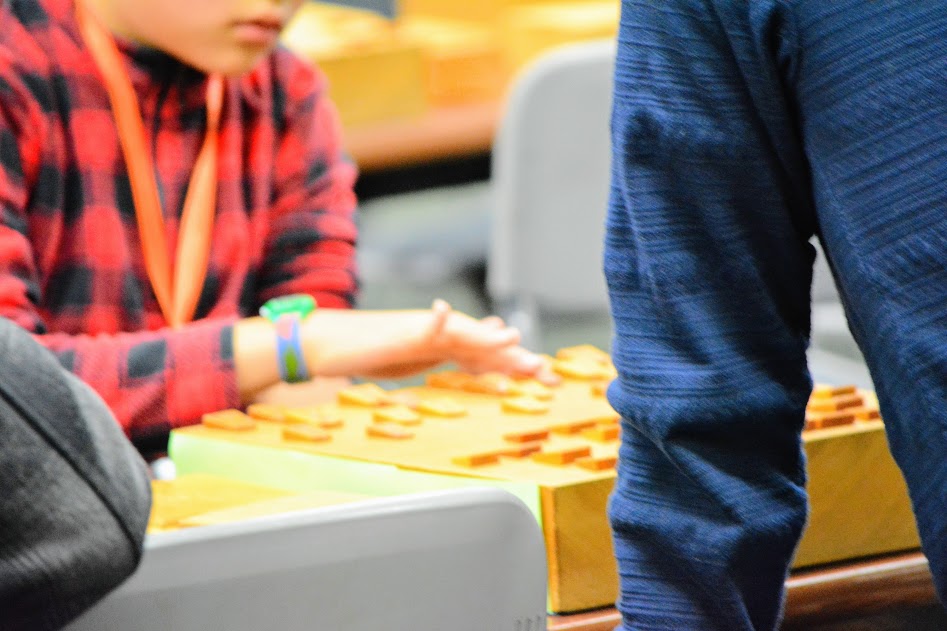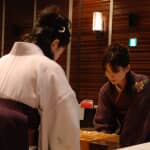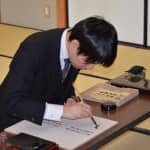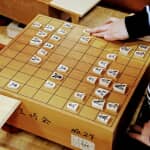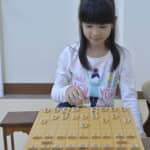Shogi 5 March 2017
Five Good Reasons for “Koma ochi”
“Koma ochi” in Shogi is what you call a handicap. A superior player drops several pieces out of the total 20 pieces and plays a game with fewer pieces. In the world of Shogi, a stronger player who drops pieces is called “Uwate (Handicap giver),” and a subordinate player is called “Shitate (Handicap taker).”
If we go to a Shogi practice hall, an instructor or someone in charge decides which player drops which pieces after checking players’ skills. As a matter of fact, however, not a few people dislike “Koma chi.”
Nevertheless, “Koma ochi” is primarily an inevitable practice method for both Uwate and Shitate players to improve Shogi skills.
So, why do they dislike “Koma ochi”? When we asked this question, there were various answers such as follows.
“It is humiliating that my opponent gives me a handicap.”
“Since I am used to an even game, I do not know how I should play “Koma ochi” games.”
“It seems unpractical to play actual games.”
“I do not like to remember standard move sequences for “Koma ochi” games.”
In the world of Go, there is also a handicap called “Oki go” where a subordinate player places some stones before beginning of a game. Compared to “Oki go,” in the world of Shogi, players “drop” some pieces for handicap. It seems that Shogi players find a negative connotation in the word of “drop.”
So, today, I would like to introduce some reasons why “Koma ochi” game is good.
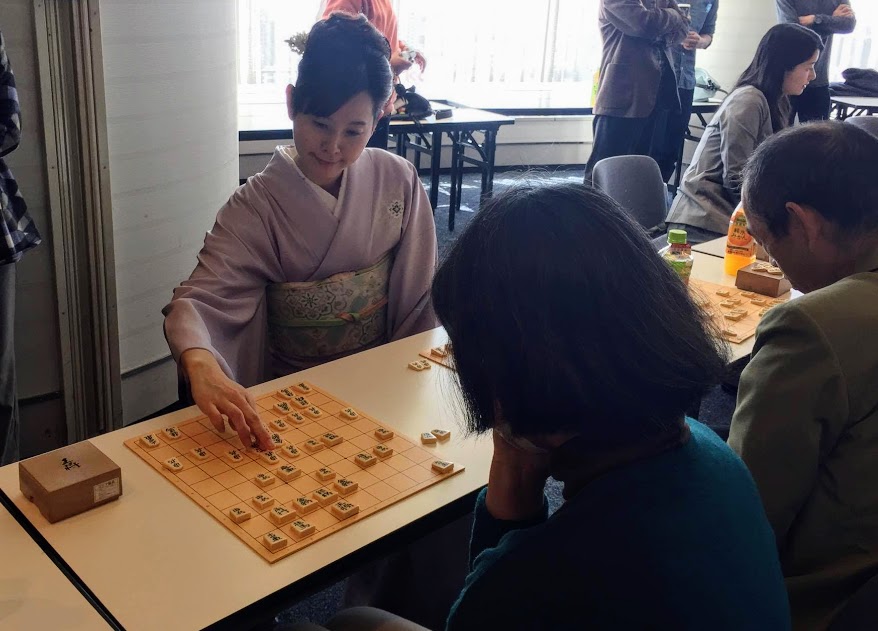
1. “Koma ochi” bridges the skill gap.
The purpose of handicap is to level the two players’ skills so that they cannot tell which one of them will win the game in the end. A close match makes us more excited if we win and more vexed when we lose than an easy game. I think this rationale is applicable not only to Shogi but to any game.
When there is too much skill gap between two players in Shogi, a subordinate player finds it difficult to maintain his/her motivation to fight till the end of game. A subordinate player may lose quite a few pieces at the beginning or a superior player unilaterally attacks the subordinate’s territory. Also, the superior player does not find such a game fun either. It is not really fulfilling to beat an opponent without concentration or motivation. We can enjoy Shogi even more when a game gives us heart-pounding moments. We continue Shogi because we enjoy it, don’t we?
2. We can sense our achievement.
We can easily see improvement in the records for track sports such as 100 meter race. However, there is no clear criteria to measure Shogi skill improvement. Therefore, it is difficult to set a goal and to gain a sense of achievement.
“Koma-ochi” system, however, can help us to roughly grasp our current skill level and to set a tangible goal.
The first level of “Koma-ochi” is “Ju-mai-ochi (10-piece Handicap)” where the handicap giver keeps only nine pieces of Fu (Pawn) and Ou (King), and removes the rest. Next level is “Hachi-mai-ochi (8-piece Handicap)” where Uwate keeps only nine pieces of Fu, Ou and two pieces of Kin (Gold), and after that, “Roku-mai-ochi (6-piece Handicap) where Uwate keeps nine pieces of Fu, Ou, two pieces of Kin and Gin (Silver).
When I was learning Shogi from my father, he often played “Koma-ochi” game with me. At first, he gave me “Ju-mai-ochi,” but as we repeatedly played “Koma-ochi” games, the handicap he gave me was reduced. I remember that I was very delighted to feel the skill gap between us was bridged gradually.
If we continue to play Shogi games against superior opponents without any handicap, we may repeatedly lose. Then, we might feel disappointed, insecure and lose motivation for Shogi wondering why we cannot be better despite daily practice.
3. We can acquire skills to win gradually.
The followings are applicable for Shitate players.
When we engage in a “Koma-ochi” game, Shitate players basically attack Uwate players’s weak points. So, a Shitate player attacks where Uwate player’s pieces are not placed.
However, once Uwate player’s pieces increase, then, a Shitate player needs to bring more pieces to attack the opponent. Once again, Uwate player’s pieces increase further, those pieces come to attack Shitate player’s camp. Then, a Shitate player learns how to make “Kakoi (Castle. Practical piece formation to protect Ou.)
When we play “Koma-ochi” games, we can learn necessary theories along with the level of handicap. For example, when a Uwate player drops Kaku (Bishop), a Shitate player should deal with Uwate player’s attacks more cleverly, and thus, a Shitate player can learn how to defend.
So, handicap games provide opportunities to steady attain various formations and strategies step by step. Without handicap, especially when we fight against a superior opponent, we should judge when and which strategy to use based on the opponent’s moves. That is very difficult for players without sufficient skills, and he/she cannot think of appropriate timings and strategies. We may end up with losing a game without understanding what exactly is going on the board. If we fall in such a situation, we cannot use tactics we have learned, and need more time to fully learn practical use of these tactics.
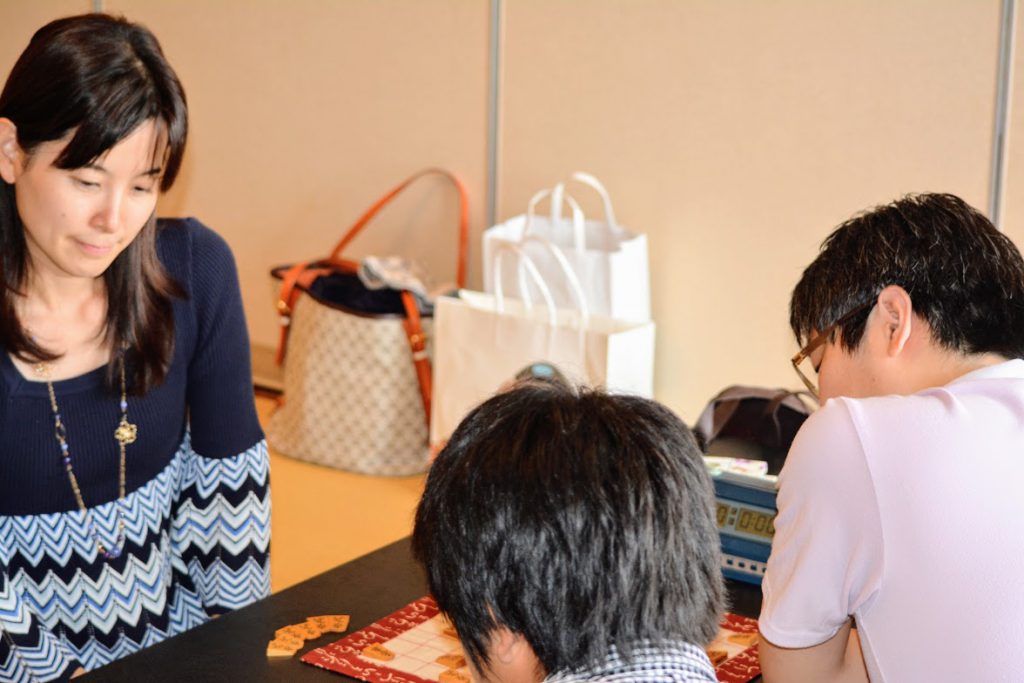
4. We come to be able to make the best use of minor pieces.
Some may think that “Koma-ochi” is to give Shiate players a chance to win, but is not very beneficial for Uwate players. Actually, however, “Koma-ochi” offers many advantages in practice even to Uwate players.
One of the advantages for Uwate players is to be able to learn how to use minor pieces effectively. In “Koma-ochi” games, naturally, Uwate players need to make the best use of minor pieces to win.
“Without Pawn (in hand), the game is lost,” “A Pawn is worth a thousand generals”
There are proverbs as such in the world of Shogi. Both of these mean that we should treasure a piece of Fu despite its lowest value among all the pieces. The stronger a player is, the better he/she understands the meanings of these proverbs and how to use minor pieces effectively.
I recommend that we should recognize “Koma-ochi” not as a game for Shitate players but as a chance to further enhance our own skills.
5. We come to be able to let Ou effectively escape.
Actually, there is one obvious benefit for Uwate to play “Koma-ochi” games. Since Uwate drops several pieces, his/her Ou has more spaces to move than Shitate’s Ou. Taking such an advantage to move Ou to the middle rank, Uwate can make it difficult for Shitate to capture Uwate’s Ou.
If we fully practice the above method, such exercises can help us when we face a situation of check at the end of a regular game without handicap. When both of the players are highly skillful, I think that each player’s Ou threatens the other’s in the ending stage of a game. In such a situation, whether or not you have had escaping exercises in addition to capturing practices could determine the outcome of the game.
I have shared five good reasons to play “Koma-ochi” games. What do you think about them?
Besides my five reasons, Senzaki Manabu stated that “Koma-ochi” can help us to nurture our future Shogi rivals and friends in his book.
Reference: “Saikyou no Koma-ochi” written by Senzaki Manabu Published by Kodansha Ltd.
(The greatest Koma-ochi)
Although I previously mentioned that “Koma-ochi” is an important exercise to elevate Shogi skills, I personally think that we do not need to feel pressure about it.
A Shogi learner commented that he disliked to memorize “Joseki (standard move sequence)” for “Koma ochi” games as a reason why he did not enjoy “Koma ochi.”
Actually, one of my students requested me to let him play with “Furi bisha (Swinging rook)” since he liked this tactic for a non-handicap game.
I believe that we can win efficiently if we memorize “Joseki.” However, I did not push him to learn “Joseki” for “Koma ochi” games since I think that the most important thing is to enjoy Shogi and “Koma ochi” games.
Another learner commented, “It is humiliating that my opponent gives me a handicap.”
as a reason to dislike “Koma ochi.” However, I would say that we do not need to take “Koma ochi” so seriously.
I am sure that all the professional players experienced “Koma ochi” games in the past.
Even Habu Yoshiharu, 3 crown, mentioned that he was always given many handicaps when he just started going to a Shogi practice hall in his book.
Reference: “Chosen Suru Yuki” published by Asahi Shimbun Publications Inc.
(Courage to challenge)
So, you do not need to feel frustrated about being given a handicap, or intimidated about learning “Joseki” for “Koma ochi” and losing in a “Koma ochi” game.
If you can enjoy “Koma ochi” and continue it just like regular Shogi games, you can enhance your skills in the end.
